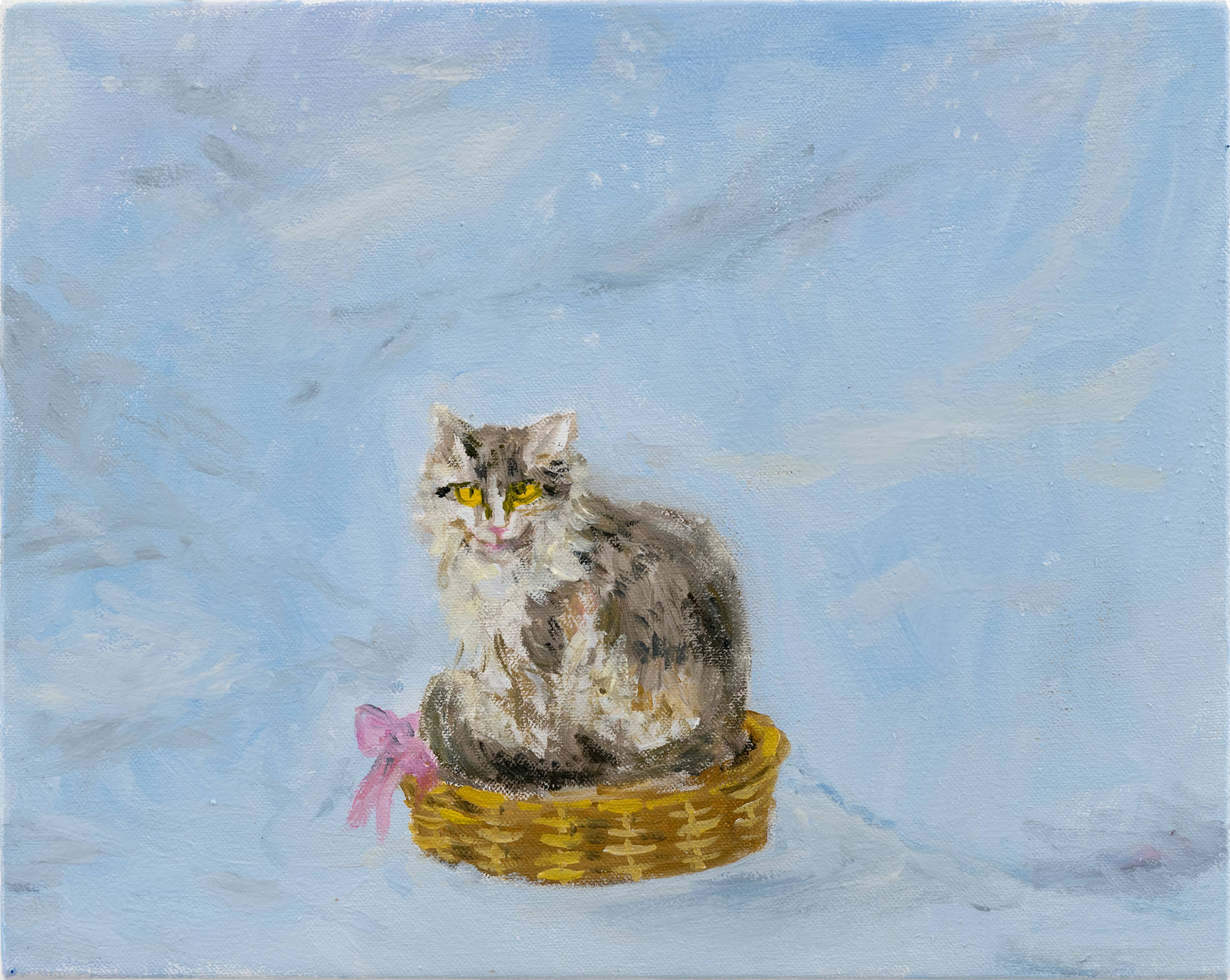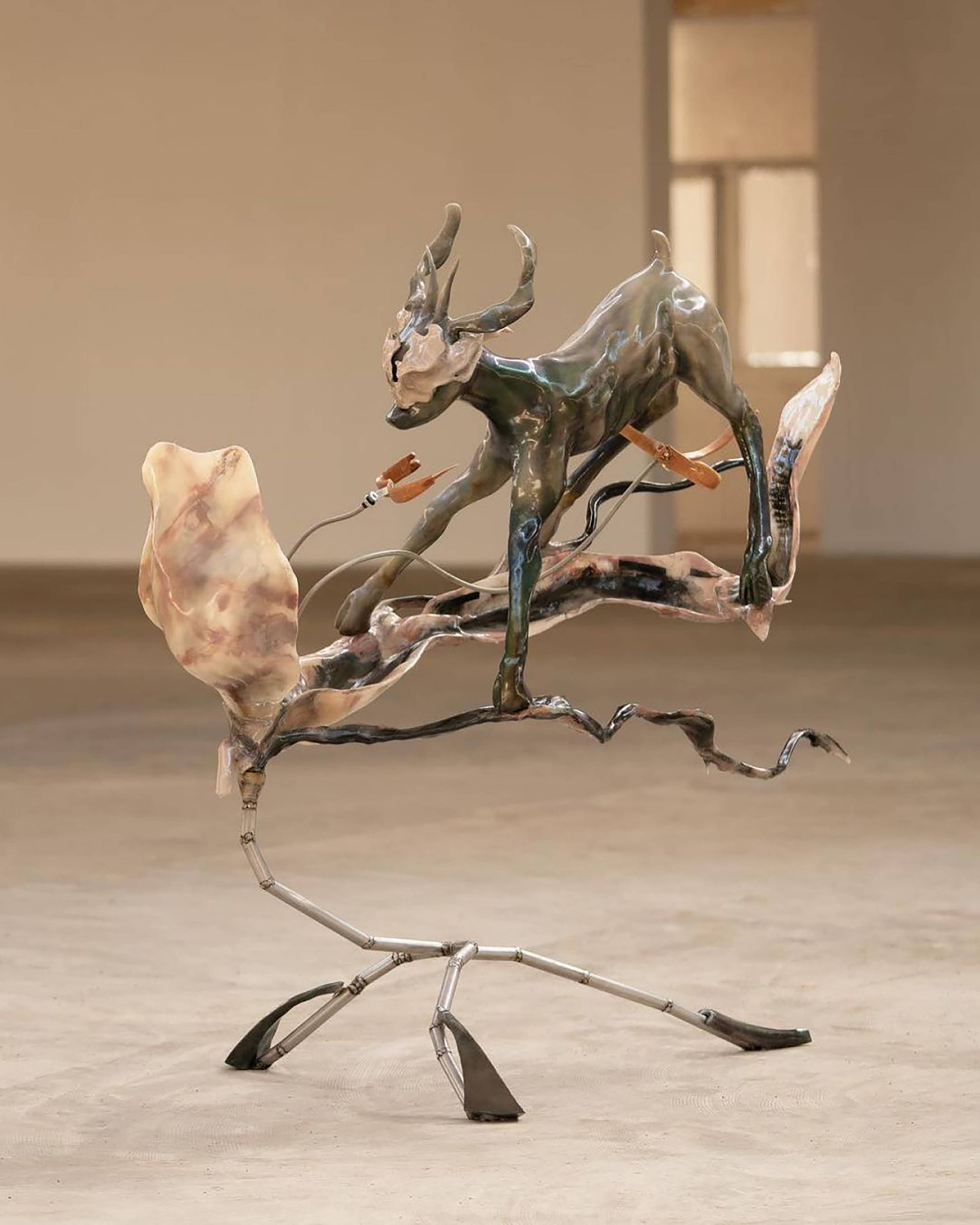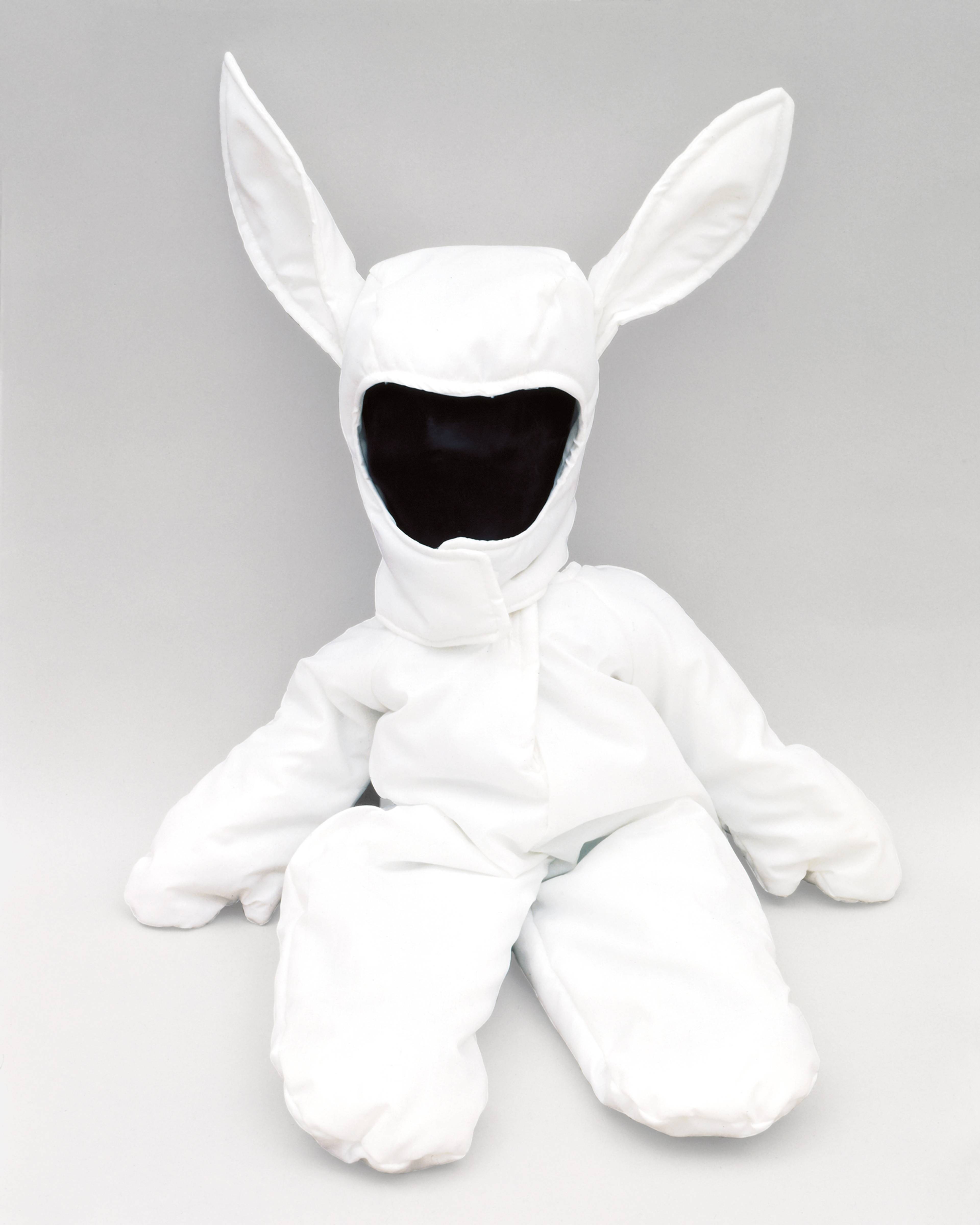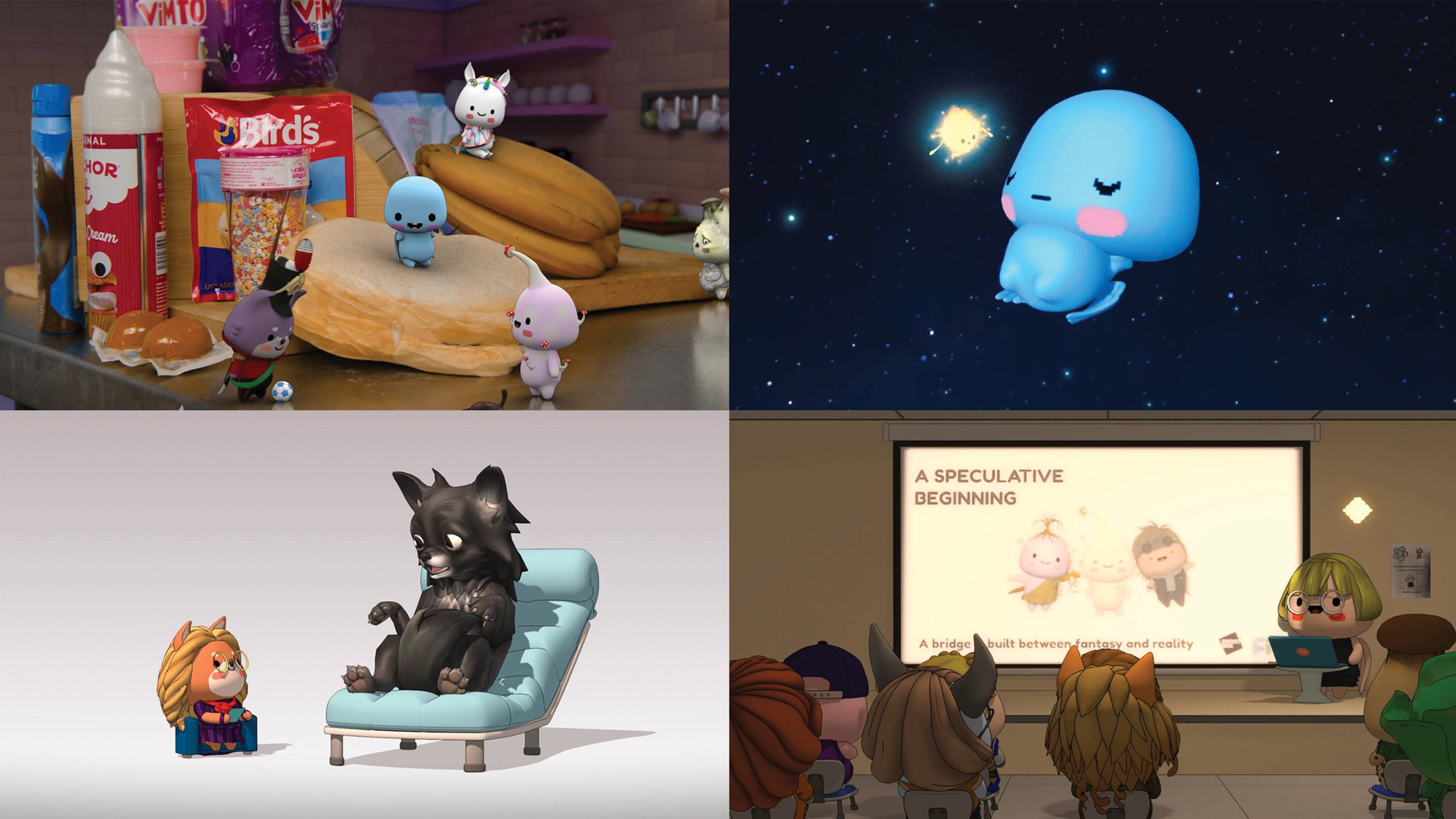If to live in the internet age is to live in an ecology of cuteness, how, to borrow from the (possibly disingenuous) promotional materials for “CUTE,” has “something so seemingly harmless” taken over the world? Is it possible that the arc of history (and of the future) has been directed towards cuteness by a force that is itself not particularly darling? The central argument at Somerset House, London seems to be that cuteness is a floppy lil sword that cuts through everything in its path. But what if lovability is actually a kind of shield rendering ugly truths about our world less visible or somehow more tolerable?
See Exhibit A: a reliquary of Hello Kitty that would impress the Vatican. If you haven’t had enough after perusing the dolls, pencil cases, lunch boxes, music boxes, suitcases, shoes, pillows, alarm clocks, and other accouterments of Full-Spectrum Kitty, there is a selfie-ready Kitty wall in the next room and a Kitty disco at the back, all enjoinments to celebrate fifty years of the red-bowed cat. Herein lies the great contradiction at the heart of huggability, which offers a solace from the cruel, indifferent world, even as it makes its own demands of us – as any cat owner will immediately understand. (Indeed, Kitty herself was born during a recession in Japan.) This exhibition is happy to let us cuddle up, but wouldn’t it be better if you took some swag home with you? Or lots of it? The only guise missing from the show is Spreadsheet Kitty, overseeing the quarterly earnings reports.
Isaac Lythgoe, When everything is new the pleasures are skin deep, 2023
Nayland Blake, The Little One, 1994, porcelain, nylon, and silk, 59.7 × 36.8 × 12.1 cm. Courtesy: the artist
Kitty’s origin story alludes to the globalization of Japanese kawaii culture and its influence on Western notions of cute, especially vis-à-vis manga. Though a multifaceted form encompassing action, sci-fi, and horror, cuteness lies undeniably at the heart of many of the form’s most successful works, not least Astro Boy, Kitarō, and Sailor Moon. Subtexts of innocent sexual attraction are a major theme at Somerset House, where wall texts trace the origins of the doe-eyed shōjo (young girl) to Junichi Nakahara and his understudy, Rune Naito. Working on manga primarily aimed at young female readers, they created a Möbius strip of unrequited desire: the male gaze telescoped into the literal eyes of fictional young girls, to be read by IRL young girls, who are looked upon in turn by young boys. Such contradictions become stereotypes in their own right when, outside the manga panel, the racialized imaginary of Japanese sexuality become an entrenched narrative among anime’s grosser superfans.
Am I just a critic spoiling the fun with these kinds of maunderings? Perhaps. But many of the contemporary artists surveyed on the second floor seem to share my unease. With the frenetic throughput of TikTok, the video works of Bart Seng Wen Long feature a kind of Harajuku-infused Young Girl cuteness, as still images flash behind in an uncanny, terrifying way. When everywhere you look, you see impossible cuteness, your humanity renders you basically obsolete. But it’s not just humans being subjected to panopticute: In Cosima von Bonin’s (*1962) KILLER WHALE WITH LONG EYELASHES I (RHINO* VERSION) (2018), a cuddly beached whale slumps against a chair. This pietà of exhaustion evokes the notion of “charismatic megafauna” – large animals with widespread cultural appeal that have become marketing protagonists for conservation groups in this age of extinction. Are we cute enough to be saved?
Cosima von Bonin, KILLER WHALE WITH LONG EYELASHES I (RHINO* VERSION) *Rhino by Renate Mueller, Germany, 1960s, 2018, fabric, leather, canvas, wooden chair, 106.7 x 266.7 x 73.7 cm. Courtesy: the artist and Petzel Gallery, New York
Stills from Ed Fornieles, Fini Season One: Adventures in Symbiotic Love Tyranny, 2024
The visitor may be struck by the centrality of transgenic organisms here – Hello Kitty is part girl, part cat, after all. Perhaps this is an admission of sorts: that cuteness is not human, or even that it is opposed to humanity outright. In Isaac Lythgoe’s (*1989) techno tableau When everything is new the pleasures are skin deep (2023), a futuristic Bambi is caught in a whirlwind of energy, scattering a not-quite-organic flower across his face and obscuring his eyes. Ed Fornieles’s (*1983) Fini Season One: Adventures in Symbiotic Love Tyranny (2023) features an almost criminally chère chihuahua with a human voice, and an agenda that recapitulates the charismatic megafauna narrative (in this case, a mini-fauna): If we activate the cuteness center of your brain, you’ll make room for us in your anthropic tyranny. Is it a hopeful message? Cuteness as the criterion of survival? It depends on how cute you think Roko’s Basilisk is.
___
“CUTE”
Somerset House
25 Jan – 14 Apr 2024






